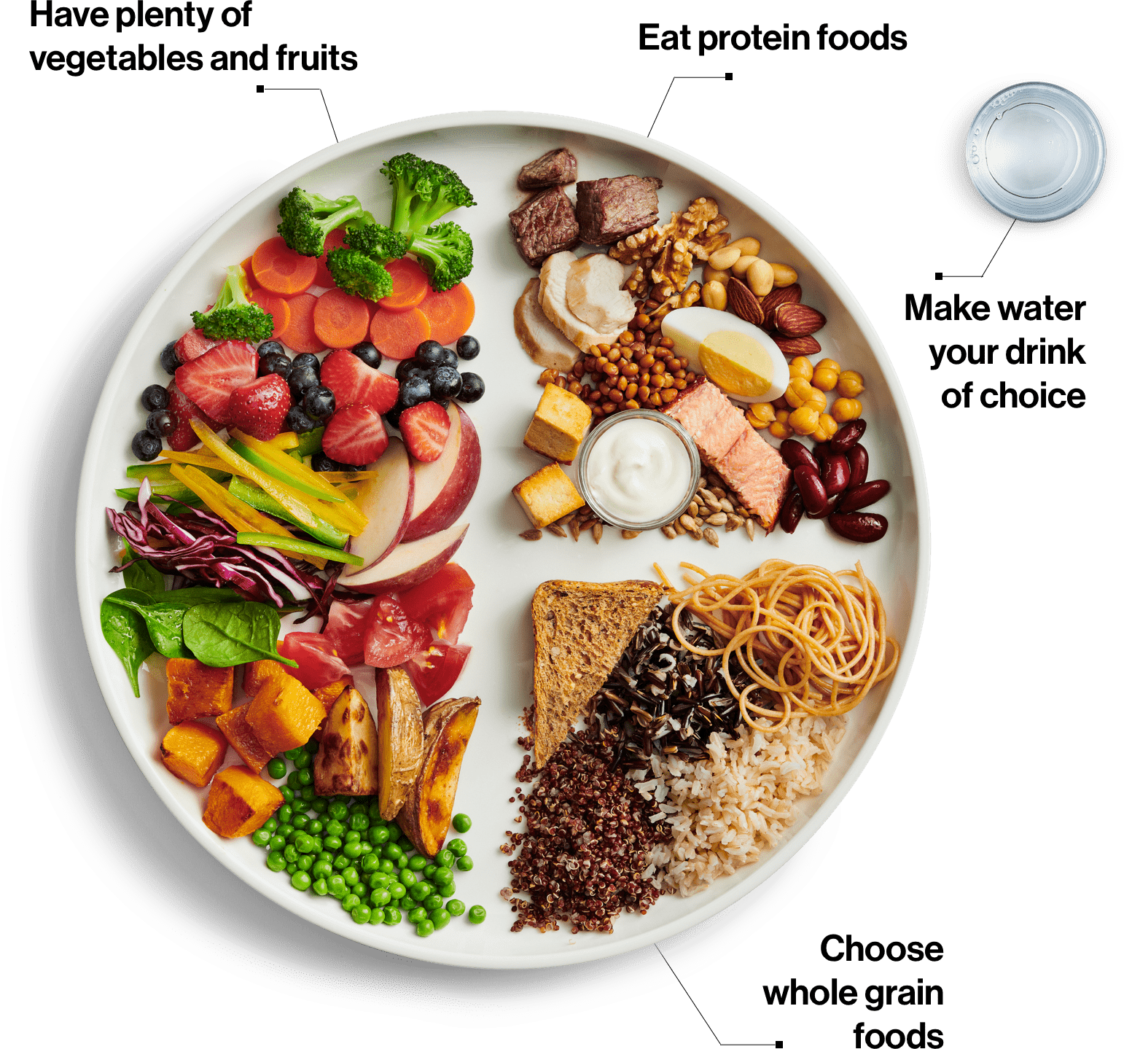Table of Contents
What do you need to eat to lose weight, gain muscle or maintain weight? Don’t worry, it’s not about those 20 miracle foods from the women’s magazine or the top 5 instant keto diets that will make your body weight fluctuate like a roller coaster. And what’s best? You do not have to eliminate carbohydrates, fats, gluten, lactose, meat or dairy products and turn your diet upside down. So, what is the secret to losing weight? Gradually learning to eat food according to your needs. There’s no magic or revolutionary celebrity detox. After reading today’s article, you’ll be on your way to doing it, too. You just have to want it and work toward success.
What determines whether you lose weight, gain weight or maintain it?
Although at first, especially for newcomers, it may seem extremely difficult to lose weight, but this is not the case. On the contrary, it is quite a simple and fun game. You don’t even have to eat exactly according to a detailed plan right down to the last gram of protein and then blame yourself for eating something that wasn’t in the diet plan, ruining everything, and feeling like there’s no point in trying any harder. This won’t work. To be successful, you just have to know and respect certain rules that you simply cannot do without. And the most important factor is energy balance. [1-3]
- Negative energy balance: A condition where you burn more energy than you take in, thereby slimming down and losing body weight.
- Equal energy balance: A state where you have an average energy intake and output that is in equilibrium, thus maintaining your body weight.
- Positive energy balance: A state where you burn less energy than you take in, and thus gain weight.

What do all diets have in common?
Whether it’s a keto instant diet, a low carbohydrate or a lemon diet, their “success” and functionality are conditional on them putting you in a negative energy balance (calorie deficit) and, unfortunately, you only lose weight temporarily in most cases. All sorts of diets, detoxes and weight loss programs are just tools for the calorie deficit. It is then up to you what instrument you choose. Would you rather reach for something that will go slower, but the result will be permanent, or will you eagerly search for shortcuts to quickly achieve results, which will be most likely replaced with the yo-yo effect?
What factors influence energy intake and output?
Matters are not so simple, there are factors that affect both energy intake and output, and some are not entirely in your hands. But this does not mean that the energy balance does not apply. These factors “only bend the energy balance.“
- Factors affecting energy intake: Appetite in the form of hormones affecting food intake (leptin, ghrelin, progesterone, cholecystokinin or peptide YY), economic and sociocultural factors, real use of food energy, self-control, stress, emotion or the inability to face excessively attractive foods without consuming them.
- Factors affecting energy output: Basal and resting metabolism (BMR and RMR), dietary history (metabolic adaptation), daytime activity (NEAT), sports and physical activity (EAT), thermal effect of diet (TEF) and both physical and health condition.
If we took two identical twins, gave them the same diet and controlled their daily activities so that they were the same, different results can be achieved both in weight loss and weight gain, which are due to the factors mentioned above. This is why every person needs to gradually learn to understand how their body reacts and what is specifically good for them. [4]
Why can someone eat what they want, and others gain weight only from looking at a bread roll?
“Yeah, Karl and Lucy from the second floor over there, they can eat whatever they want, and won’t gain any weight. But I’ll just have one more dumpling, and I’ll have a kilo extra on top. Genetics and a slow metabolism is really unfair,” says Jane, Lucy’s long-time friend. Despite this all cannot blame genetics, a slowed down or damaged metabolism, but simply a larger energy output during the day. Let’s take a look at an example.
Karl and Lucy both have manual work, where Karl works in the forest with the forest administration and Lucy is a masseuse. After 8 hours on the job, they go to work out together, walk the dog, shop, and at home Karl manages to cook and Lucy to clean. Jane, on the other hand, has a sedentary job, she drives at all times, does not do sports, spends most of her free time watching TV or behind a computer after work, and tries to lose weight through various diets. What’s the difference? Karl and Lucy’s energy output could easily be 2,000 kcal bigger than Jane’s, so they can eat a lot more food without gaining weight. All thanks to having an active lifestyle and employment.
If you want to learn about NEAT and its massive impact on health and weight loss, read our article What Is the Most Important Factor When Losing Weight?
How to calculate your energy and macronutrient intake for weight loss?
We will not burden you with heavy mathematics, and we offer you a simple solution in the form of our online energy intake and macronutrient calculator, where you can easily calculate all yourself. But if you would like to learn more about calculating energy intake and creating a diet, read our article How to Calculate Energy Intake and Macronutrients for Weight Loss or Gaining Muscle?
How to eat to lose weight?
We’ve already said that to lose more or less kilograms successfully and long-term, you don’t have to google the most effective and fast acting diets or go on a months-long detox. All you have to do is eat as much fresh and minimally processed food as possible, keep an eye on the composition of your diet and the size of your portions. It’s that simple, just be patient and consistent, monitor progress in the form of changes in body weight and body measurements regularly every two weeks under the same conditions.
A huge help not only for weight loss, but also for improving and restoring the diet is meal prep. Why? You can simply control ingredients used to prepare your meals, avoiding various calorie bombs. [5-7] If you want to learn more about meal prep, read our article How to Effectively Prepare and Pack Meals?
How to improve your diet and reduce energy demands of food intake?
- Eat more fruit and vegetables. It is recommended to eat at least 400 grams of vegetables and 200 grams of fruit per day, representing approximately 4-5 and 2-3 medium-sized pieces, respectively. Vegetables contain a large percentage of water, fibre and valuable micronutrients. This will enhance healthy digestion and satiety.
- Have a portion of protein with each meal. Each meal should contain a balanced ratio of all macronutrients, but proteins are like two aces in poker. The human body cannot create them, so they must be consumed via a varied diet or appropriate food supplements. Protein is indispensable for muscle growth, optimal immune function or a satisfactory feeling of satiety after a meal, as well as for suppressing sweet cravings. [8-10]
- Eat more fermented foods. Fermented foods include sauerkraut, pickles, fermented vegetables, miso, natto, tofu, sour dairy products, kombucha or spicy Korean fermented kimchi vegetables. This gives you a good dose of healthy bacteria, fibre and a variety of other micronutrients.
- Try to eat more local and seasonal foods. The shorter the way the groceries had to travel to get to your table, the better. For one thing, they can have a larger content of a range of vitamins, minerals, trace elements and their carbon footprint is much smaller. Try going to farmers’ markets from time to time or look for farm crates.
- Don’t eat more than you need. If you have a few extra pieces of vegetables or fruit, not much will happen, but if you eat a few packs of different sweets or fast food in a day, this is a problem. By learning to eat according to your needs and not eating highly industrially processed foods, you will save the consumption of large amounts of calories and avoid excessive intake of unhealthy fats, sugars and salt.
- Partially replace animal protein with plant protein. Some meats also contain large amounts of saturated fatty acids the same as some sausages and fatty cheese. Try eating more leguminous vegetables suitably combined with cereals. You can also try various leguminous spreads such as hummus or alternatives to meat such as tofu or tempeh. This will reduce your intake of saturated fatty acids and enrich your diet with high-quality vegetable proteins.
- Choose whole wheat pastries and cereals. Thanks to the preference of whole grain products, you will receive more fibre and a range of micronutrients found in ground grain. Fibre has a positive effect on the feeling of satiety, thus preventing you from looking for a snack soon after a meal.
- Reach for sustainable resources of seafood and fish. It is no secret that, as a society, we are facing a huge loss of species and, in the case of fish and seafood, it is because of overfishing that marine resources are not recovering quickly enough. We should be responsible for ourselves and the environment. Try to note, therefore, whether the fish and seafood you consume comes from certified and sustainable fisheries. [11]
- Drink tap water. Why? Water is crucial for our body, and we should drink at least 30-45ml per kilogram of body weight per day. If you cut down on liquid calories including alcohol, and drink water, quality coffee or tea, you can save huge amounts of calories. After all, a litre of Coca-Cola is roughly 450 kcal, which is equal to the energy hidden in one lunch.
- Eat a rainbow. The more varied and colourful your daily food mix, the better. This results in a greater intake of various antioxidants and biologically active elements with different ranges of activity. Red means a decent portion of carotenoids in the form of lycopene. And the dark green colour signifies you can enjoy the beneficial effects of chlorophyll.

And what are proteins, fats and carbohydrates?
- Protein sources (1 gram has 4 kcal): meat, fish, seafood, milk, dairy products and cheeses, eggs, legumes (peas, beans, all kinds of lentils, chickpeas, edamame), pseudo-cereals (buckwheat, amaranth, quinoa), tofu, tempeh, nuts and seeds, vegetable meat substitutes, fine yeast, whey protein, vegetable protein, protein bars.
- Sources of fat (1 gram has 9 kcal): nuts and seeds, oils, olives, avocado and butter as a natural component of animal proteins.
- Carbohydrate sources (1 gram has 4 kcal): whole grains and cereals (oats, flour, rice, pasta, bread and pastries), pseudo cereals, potatoes and sweet potatoes, legumes, fruit and vegetables.
What foods to avoid when trying to lose weight?
You don’t have to eliminate anything, but it definitely helps if you limit liquid calories, highly industrially processed foods and avoid snacking. What do you gain from this? You will save a lot of calories that you can invest in higher quality foods, reduce salt intake, excessive intake of which is associated with a higher risk of developing high blood pressure, reduce unhealthy fats (saturated and trans fatty acids) and refined carbohydrates. Don’t worry, once in a while, treat yourself to whatever you want. Will it be a pizza, hamburger or something else? It is enough to prepare for this, for example, with smaller side dish portions during the day, and thus save some calories so that you do not unnecessarily increase your energy intake.
If you eliminate any foods you like from your diet on a day-to-day basis, there is a greater risk that you will fall into sudden overeating and binge-eating of this particular food. Reduce the amount and indulge in your favourite slice of cake or pizza once in a while.

What to focus on when losing weight?
- Beware of liquid calories, and when you go with friends for a drink or a cold one, have only one drink or reach for less caloric alternatives.
- If having fast food, choose the healthiest and least caloric food possible. How about a vegetable salad without dressing and pieces of meat? Take it easy with fried food.
- Try to limit sweets in all their forms as much as possible and remember that the first bite is always the best and most satisfying, so why go on?
- Salty snacks, cheese and sausages typically contain large amounts of energy in small volumes with the bonus of unhealthy fats and salt. When it comes to sausages, go for the best quality ham, the least fatty cheese and try to make chips yourself at home. You’ll probably be equally satisfied with golden baked American potatoes in the oven with yogurt dip. If you’re a sausage lover, get a ham maker and prepare your ham at home. You will avoid excessive amounts of salt, you use spices to taste, and it’s really very simple.
How many times a day should you eat so you can lose weight healthily?
The frequency of meals during the day is addressed both by professional athletes and strength athletes with the aim of gaining the maximum amount of muscle mass, as well as by those who want to “just” eat healthy and lose weight. Nutrient timing due to stress and regeneration really only makes sense for those whose occupation is sport, undergoing a massive training volume or have ambitions to stand on the boards of bodybuilding competitions that mean the world to them. For other “mortals,” there’s no point in forcing yourself to eat eight times a day and stuff yourself with quark for the night, or necessarily trying intermittent fasting just because it’s cool.
Eat as many meals during the day as you like. That’s probably the best advice I can give you. But be careful that your diet doesn’t lose its system, order, and become a disobedient anarchist. For example, you can scale back from the traditional 2-3 larger meals during the day in the form of breakfast, lunch and dinner and complement these larger meals with suitable snacks as needed and over time observe what suits you best.
Can’t you get by without having breakfast within half an hour of waking up? Then do it. Does your breakfast look more like brunch in the morning because when you wake up you have no thought to eat? That’s fine too, keep doing it if it suits you. But couldn’t it be that you’re more used to eating at bedtime? Be careful not to overeat in the evening. You hold all the cards in your hand, and you play only with yourself.
You might be interested in these products:
What to eat in the evening and what is the latest time to eat to lose weight successfully?
“I haven’t eaten since 5 p.m., and that’s how I managed to lose weight”. “I don’t eat any carbohydrates after 6 o’clock in the evening because they are automatically stored as fat to prevent weight loss”. Have you heard or seen these similar statements a hundred times? Let’s set the record straight. If you have your last meal at 5 pm, while you were normally accustomed to eating at 7:30 pm, you will reduce your meal time and perhaps “deprive” yourself of one daily meal. What’s going to happen? You begin to spontaneously reduce your caloric intake, and you may start losing weight. What about eating carbohydrates in the evening, does it make you fat? I will disappoint you again, the same food with the same carbohydrate content has the same energy value at 9 am, 2 pm, 5:59 and 6:01 pm. Your body cannot do black magic, which is why all of a sudden it can’t conjure up an extra kilogram of fat from a plate of Italian pasta for dinner when you’re in a calorie deficit. You may also be surprised that in one study conducted on Israeli police officers, researchers observed a greater loss of body fat in a group that ate more carbohydrates for dinner, both groups having the same total energy intake during the day. [12]
What to eat in the evening whilst losing weight?
Very simply it is just another daily meal according to a healthy diet and your needs. How about a roast trout dinner with American potatoes and vegetable salad? Or roasted smoked tofu with green beans and a mix of baked sweet potatoes or potatoes with a vegetable salad? You should avoid eating spicy or fatty foods or with too much sugar as your last meal of the day. It could negatively disrupt your sleep, and it may even cause unpleasant heartburn (gastro-oesophageal reflux). [13]
What is the latest time to eat in the evening?
For most people, they should eat their last meal about 2-3 hours before they plan to sleep. Here, too, of course, there are great individual differences, which is why you need to know your body. Someone can have a light dinner even an hour before sleep, and they’re fine, but others may need at least two hours. But consuming most of your calories in the evening is not a good idea, so don’t starve yourself during the day. This will prevent evening raids in the refrigerator.

Are there foods that speed up weight loss?
In the sense of consuming certain foods and accelerating weight loss, there is no such thing. Even foods with negative calories do not exist, as some often try to “sensationally incite” us. Each food contains a certain amount of energy that it will supply to the body. This amount of energy is never less than that which the body spends on processing food in the form of thermal effect.
If you focus on sufficient protein intake, which has the highest thermal effect (20-30%), you will promote satiety, muscle growth and get your sweet cravings more easily under control. Of the 100 kcal proteins received, so realistically your body uses 70-80 kcal and the rest is energy required for protein processing. Other foods that can help with weight loss include foods with a low-energy density.
How to eat more and lose weight?
Isn’t it nonsense to eat more and lose weight? Not at all. When people generally start eating according to the principles of a healthy diet, the amount of their dietary intake increases, but the total energy value decreases compared to their previous diet. What causes this? Mostly by removing calorie bombs from their diet, which contain large amounts of energy in small volumes, and replacing them with foods which, in turn, have small amounts of energy in large volumes. This relationship between food volume and energy value is called energy density.

Foods with low energy density of which you can eat much more
- Fruit is a natural source of sugar, so you should approach it a little more carefully. No matter what they say about it, it’s associated with a positive effect on weight reduction. You should eat about 200 grams of fruit a day. For example, berry fruits, apples or citrus are very energy-efficient. But remember, you should eat your fruit, not drink it. Other fruits with low calories can be found in the article Fruit and Weight Loss – Which Fruit Has the Least Calories? [14]
- Vegetables generally contain the vast majority of their weight in the form of water, and even as a result have very few calories. The cucumber has 15 kcal per 100 grams, celery 16 kcal, iceberg lettuce around 17 kcal and tomatoes 18 kcal. Now do you understand why it’s important to have a portion of vegetables with each meal? For example, you can use cauliflower rice, zucchini spaghetti or celery fries as a side dish.
- Potatoes contain on average just 77 kcal per 100 grams of raw food and are also among the most satiating foods.
- You can also use different sources of fibre, which can support the feeling of satiety after a meal. But you shouldn’t eat too much fibre. It’s total daily intake should be around 30-35 grams. You can reach for, say, psyllium or apple fibre which you can add to smoothies or yogurts. Glucomannan can also help to promote satiety.
- At least as a partial substitute for sugar, try to use the calorie-free sweetener Erythritol, for example, which has almost the same sweetness as sugar and is found naturally in some fruits. You can also reach for Xylitol, chicory syrup or stevia.
Sample diet plan for weight lossvv
A sample diet plan for an average 75-kilogram woman who, according to our macronutrient energy calculator, should receive 1,900 kcal for weight loss, and for an average 90-kilogram man who, for weight loss, should receive 2,300 kcal. The difference in greater energy intake is mainly due to larger portions or extra food. The weight of ingredients is taken in their raw state.
Weight loss menu for inspiration
- Average 75 kilogram female
- Energy: 1 920 kcal (7 676 kJ), protein 150g (600 kcal or 2 400 kJ), saccharides 215g (860 kcal or 3 440 kJ), fat 51g (459 kcal or 1 836 kJ), fibre 30g
- Breakfast: Oat porridge (40g), water (180ml), Just Whey Protein (15g), FitCheat Protein Chocolate (10g), GymBeam Peanut Butter (15g), half of the banana (55g)
- Snack: MoiMüv Protein Bar (60g) and apple (150g)
- Lunch: jasmine rice (65g), Alaskan cod (200g), oil (5ml), average portion size of a fresh vegetable salad without dressing (200g)
- Snack: Greek yogurt 0% (140g), crunchy granola (20g)
- Snack II post training: Just Whey Protein (30g)
- Dinner: couscous (65g), smoked tofu (90g), fresh roasted mixed vegetables (200g) in oil (5ml)
- Average 90 kilogram male
- Energy: 2,300 kcal (9,200 kJ), protein 178g (712 kcal or 2 848 kJ), saccharides 261g (1 044 kcal or 4 176 kJ), fat 61g (549 kcal or 2 196 kJ), fibre 35g
- Breakfast: Oat porridge (40g), water (180ml), Just Whey Protein (30g), FitCheat Protein Chocolate (10g), GymBeam Peanut Butter (15g), half a banana (55g)
- Snack: MoiMüv Protein Bar (60g), apple (150g) a low-fat acidophilus milk (500g)
- Lunch: jasmine rice (80g), Alaskan cod (200g), oil (5ml), average portion size of a fresh vegetable salad without dressing (200g), omega 3 (3 capsules)
- Snack: Greek yogurt 0% (140g), crunchy granola (20g), pear (140g)
- Snack II post training: Just Whey Protein (30g)
- Dinner: couscous (70g), smoked tofu (90g), fresh roasted mixed vegetables (200g) in oil (5ml)
How to promote weight loss?
We’ve discussed the energy intake side in a pretty exhausting manner. Let’s also focus on the energy expenditure side because it is always better to eat more and move more. This will alleviate metabolic adaptations that happen inadvertently and this may be reflected in the famous “metabolism slowdown” due to adaptive thermogenesis. [15]
- Move as much as possible during the day and look for ways to use your legs as a means of transport. Take the stairs instead of the elevators and escalators. Ride a bike. Take regular active breaks at work.
- Play sports regularly. Whether it’s running, CrossFit, gym or whatever you like. Approximately three times a week, take up strength sports (if you enjoy them) and spend the rest of your days on other sports you enjoy and go for walks in nature.
- Think about how to spend your weekends actively. Take a cycling weekend, hike into the mountains or partake in at least a few hours of activity every weekend.
- Try using appropriate supplements to help you manage your calorie deficit. Thanks to high-quality fat burners, you burn slightly more energy during a workout and at rest, Appetite Control can help you rein in an excessive appetite, and Garcinia Cambogia itself has an interesting effect in relation to taste and appetite.
What do you gain from a more active lifestyle? You will lose weight more easily, strengthen your body, feel better and more confident, and begin to work on a better quality sleep or a more resistant immune system.

What is the lesson?
As you can see, weight loss is not black magic. You don’t even have to eliminate entire food groups or put your success in the hands of popular non-functional or instant diets or detoxes. It just requires a little more thought about food, learning to put together a menu based on, say, the principles of healthy eating, and tracking portion sizes over time. Just adding vegetables, fruits, high-quality proteins and working on an active lifestyle will take you in the direction towards success. If you find hidden calorie bombs and liquid calories in your diet that you will reduce over time, it is only a matter of patience, consistency and diligence when you achieve your goals. Be patient and the results will begin to show at the right time.
And what helped you lose weight? Share your advice and tips with us in the comments. If you liked the article, promote it by sharing it so that even your friends learn how to lose weight permanently and successfully and avoid non-functional diets and detoxes.
[1] Romieu, I., Dossus, L., Barquera, S., Blottière, H. M., Franks, P. W., Gunter, M., Hwalla, N., Hursting, S. D., Leitzmann, M., Margetts, B., Nishida, C., Potischman, N., Seidell, J., Stepien, M., Wang, Y., Westerterp, K., Winichagoon, P., Wiseman, M., Willett, W. C., & IARC working group on Energy Balance and Obesity. – Energy balance and obesity: What are the main drivers? – https://doi.org/10.1007/s10552-017-0869-z
[2] Casazza, K., Fontaine, K. R., Astrup, A., Birch, L. L., Brown, A. W., Bohan Brown, M. M., Durant, N., Dutton, G., Foster, E. M., Heymsfield, S. B., McIver, K., Mehta, T., Menachemi, N., Newby, P. K., Pate, R., Rolls, B. J., Sen, B., Smith, D. L., Thomas, D. M., & Allison, D. B. – Myths, presumptions, and facts about obesity. – https://doi.org/10.1056/NEJMsa1208051
[3] Hopkins, M., & Blundell, J. E. – Energy balance, body composition, sedentariness and appetite regulation: Pathways to obesity. – https://doi.org/10.1042/CS20160006
[4] Bouchard, C., Tremblay, A., Després, J. P., Nadeau, A., Lupien, P. J., Thériault, G., Dussault, J., Moorjani, S., Pinault, S., & Fournier, G. – The response to long-term overfeeding in identical twins. – https://doi.org/10.1056/NEJM199005243222101
[5] Tiwari, A., Aggarwal, A., Tang, W., & Drewnowski, A. – Cooking at Home: A Strategy to Comply With U.S. Dietary Guidelines at No Extra Cost. – https://doi.org/10.1016/j.amepre.2017.01.017
[6] Wolfson, J. A., & Bleich, S. N. – Is cooking at home associated with better diet quality or weight-loss intention? – https://doi.org/10.1017/S1368980014001943
[7] Mills, S., Brown, H., Wrieden, W., White, M., & Adams, J. – Frequency of eating home cooked meals and potential benefits for diet and health: Cross-sectional analysis of a population-based cohort study. – https://doi.org/10.1186/s12966-017-0567-y
[8] Jäger, R., Kerksick, C. M., Campbell, B. I., Cribb, P. J., Wells, S. D., Skwiat, T. M., Purpura, M., Ziegenfuss, T. N., Ferrando, A. A., Arent, S. M., Smith-Ryan, A. E., Stout, J. R., Arciero, P. J., Ormsbee, M. J., Taylor, L. W., Wilborn, C. D., Kalman, D. S., Kreider, R. B., Willoughby, D. S., … Antonio, J. – International Society of Sports Nutrition Position Stand: Protein and exercise. – https://doi.org/10.1186/s12970-017-0177-8
[9] Gosby, A. K., Conigrave, A. D., Raubenheimer, D., & Simpson, S. J. – Protein leverage and energy intake. – https://doi.org/10.1111/obr.12131
[10] Westerterp-Plantenga, M. S., Lemmens, S. G., & Westerterp, K. R. – Dietary protein – its role in satiety, energetics, weight loss and health. – https://doi.org/10.1017/S0007114512002589
[11] Link, J. S., & Watson, R. A. – Global ecosystem overfishing: Clear delineation within real limits to production. – https://doi.org/10.1126/sciadv.aav0474
[12] Sofer, S., Eliraz, A., Kaplan, S., Voet, H., Fink, G., Kima, T., & Madar, Z. – Greater weight loss and hormonal changes after 6 months diet with carbohydrates eaten mostly at dinner. – https://doi.org/10.1038/oby.2011.48
[13] Xu, L., Zhang, X., Lu, J., Dai, J.-X., Lin, R.-Q., Tian, F.-X., Liang, B., Guo, Y.-N., Luo, H.-Y., Li, N., Fang, D.-P., Zhao, R.-H., & Huang, C.-M. – The Effects of Dinner-to-Bed Time and Post-Dinner Walk on Gastric Cancer Across Different Age Groups: A Multicenter Case–Control Study in Southeast China. – https://doi.org/10.1097/MD.0000000000003397
[14] Sharma, S. P., Chung, H. J., Kim, H. J., & Hong, S. T. – Paradoxical Effects of Fruit on Obesity. – https://doi.org/10.3390/nu8100633
[15] Rosenbaum, M., & Leibel, R. L. – Adaptive thermogenesis in humans. – https://doi.org/10.1038/ijo.2010.184


Add a comment